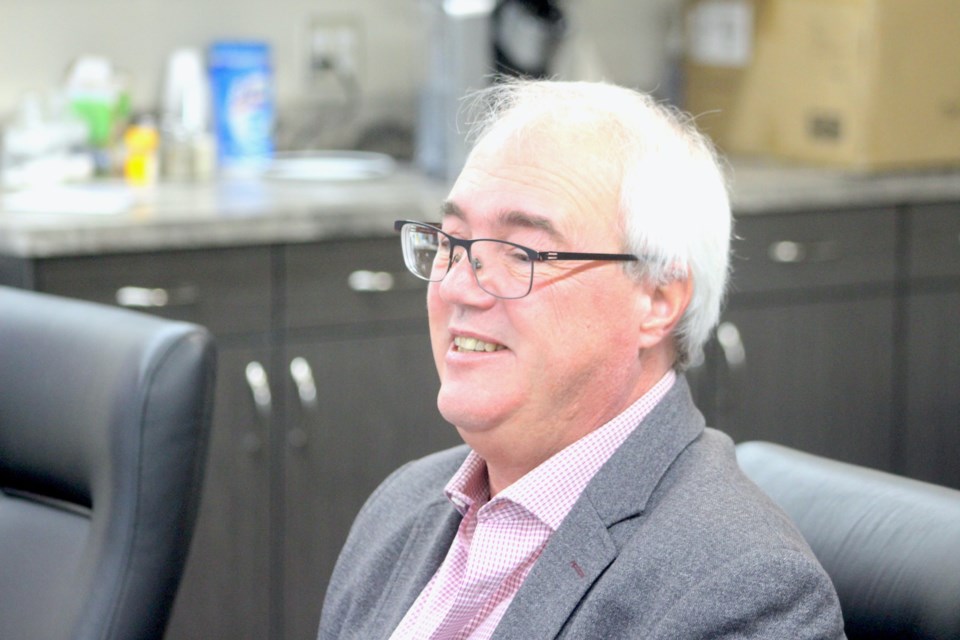BARRHEAD - Complex student needs, mental health concerns of students and staff, attendance and staff recruitment are some of the more pressing challenges faced by the Pembina Hills School Division.
That is according to the annual Student Services Assurance Report presented to Pembina Hills trustees at their Jan. 17 meeting by Rob McGarva, associate superintendent of student services.
McGarva told trustees about the mental health challenges Pembina Hills students and staff are experiencing.
"Mental health is always a concern, but since COVID, we are certainly seeing more issues around anxiety. Self-harm is also becoming a more significant issue across North America, and Pembina Hills is not immune, and that is putting more stress on our staff," he said.
Finding appropriate support staff is also becoming a larger issue, McGarva said, adding that the division has been fortunate to contract out the service for some shortfalls, referring to speech-language pathologists.
"But it is quite costly and doesn't provide the same cohesive service," he said.
It is also becoming more difficult to find educational assistants (EA), McGarva said, adding that only a few years ago, it was common to receive a dozen or more applications for a vacancy.
"Now, there are only a few ... and they are not always legitimate with some of the applicants lying about being able to work in Canada," he said.
McGarva said the division is trying to change the problem of finding EAs by essentially growing their own by offering a new educational assistant dual credit program to high school students.
He also said most of the division's EAs are not accredited, adding that unaccredited Pembina Hills EAs can take a similar course as part of the program while still working.
Another way McGarva said the division is helping students with difficulties is through student and family advocates with a background in social work. The positions are being funded through a provincial mental health grant that expires in December.
"Those positions really have had a positive impact," he said. "Because these people are trained and have the background to deal with things happening outside the school but are impacting the classroom. Things like food insecurity."
McGarva added that much of the family advocates' time and effort is focused on resolving issues that keep children out of the classroom.
"Because if you are not coming to school, it makes it difficult for our people to work with you," he said.
Superintendent Michael Borgfjord agreed, saying he believes the family advocates will continue to make a positive impact but on a larger scale.
"The position is still evolving, and as they learn more about the school system and how they can support kids with anxiety, mental health and addictions and other things, if we can keep them longer, I think we will really start to see an impact," he said. "And if we can keep them long-term, they will become even more impactful as they learn to work more with their teams."
As for how some of these measures work, McGarva said successes can be measured partly by attendance and the number of severe incidents.
McGarva defined a severe incident as one where a student exhibits outward aggression, destruction of property, or injures themselves or someone else, or their behaviour causes the need to evacuate a classroom or there is a need to restrain or isolate a student.
In the 2020-23 school year, Pembina Hills staff recorded close to 140 severe incidents. So far, in the 2023-24 school year, there have been less than 40.
On the attendance side, McGarva said the division is still struggling post-pandemic. Prior to COVID, the average daily attendance across all Pembina Hills schools was above 90 per cent, with the highest average attendance in the last seven years peaking at 95 per cent in the 2019-2020 school year. Since then, in 2020-2021, the first year of the pandemic, average attendance plummeted to 85 per cent. In the second year of the pandemic, average attendance increased to 89 per cent, which has hovered by a percentage point ever since.
Taking a look at the average attendance numbers for the first four months of the 2023-24 school year, McGarva noted they have "kids all over the spectrum", with the number of students with perfect attendance sitting at 5.5 per cent to a low of two per cent that are only attending less than half the time. The bulk of the students, 57.1 per cent, attended 90 to 99.9 per cent of the time, while 28.9 per cent attended from 74.9 per cent to 89.9 per cent of the time, and 7.3 per cent of students attended school from 50 to 74.9 per cent of the time.
"And if you read the research literature, if you are not attending at least 90 per cent of the time, you are falling behind, and we have kids attending only three-quarters of the time," he said.
Borgfjord agreed with the research and said the division needed to take steps to improve overall attendance, but they also had to be realistic.
"Because of COVID, when students are not feeling well, they stay home more often, so you have to adapt to the changing conditions," he said. "And many more students are also moving away from a compliance mindset, especially as they get older, so we have to adapt our systems to something else to support our students."


